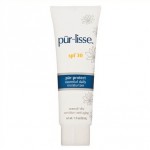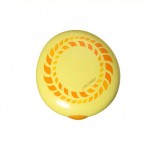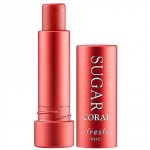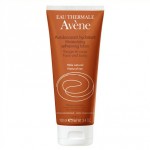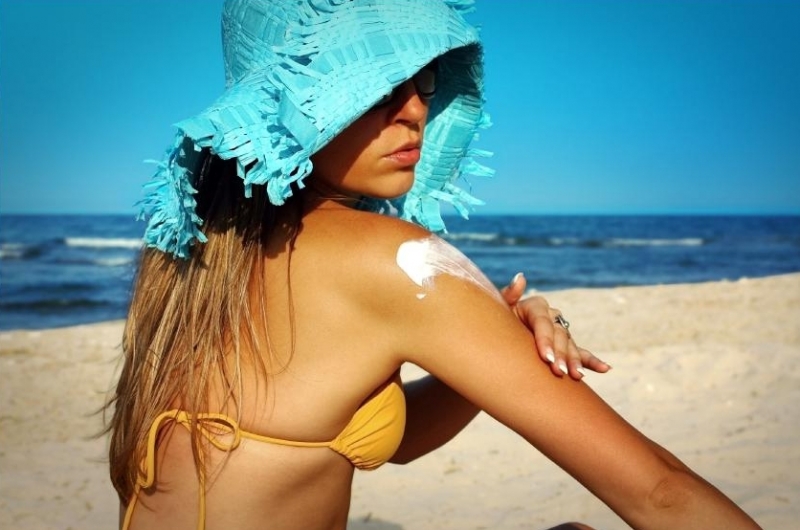
12 Jun Sun protection: When a Head-to-Toe Glow Is No Longer an Option
I realized how much my relationship with the sun had changed a few weeks ago, when spring finally hit New York after a long, gray winter and everyone in the city flocked to the nearest park or rooftop. Instead of joining them, I found myself grabbing my Panama hat and heading straight to the pharmacy to stock up on some sunscreen.
- Purlisse Pur-Protect SPF 30 Essential Daily Moisturizer, $55; dermstore.com
- Shiseido Limited Edition Sun Protection Compact Foundation Case, $8; Foundation SPF 36, $27; shiseido.com
Last November, after going through what I thought was my standard annual exam at the dermatologist’s office—submit to a mole check, have one or two spots removed, receive a letter in the mail saying everything was fine—I got a call while at work informing me that my tests were in. One of the biopsies, a small patch of skin taken from between my shoulder blades, had tested positive for melanoma.Â
The nurse on the phone recommended a surgical dermatologist and asked me to schedule an appointment as soon as possible. I needed to move fast, she explained, as I hung up the phone and struggled to hold back my tears. Needless to say, I was terrified.
I was also confused. As an otherwise healthy 26-year-old, I used to think skin cancer was something that happened after decades of excessive tanning. Born and raised in South America, I spent most of my life under the sun, never giving a thought to how much UV exposure I was getting. I felt angry at myself as I thought back to all those careless days spent on the beach, when my main concern had been what swimsuit to wear.  With no time to waste, I set up an appointment with my new doctor. In less than a week, I had booked an excise surgery and had the melanoma (plus a significant portion of the surrounding skin) removed. All that was left after those frantic days were seventeen staples on my back and a newfound panic about the sun. In the months that followed, I learned that my story was not as unusual as I might have thought.
- Fresh Sugar Lip Treatment SPF 15, $23; sephora.com
- Avène Moisturizing Self-Tanning Lotion, $19; drugstore.com
Skin cancer, it turns out, is the fastest-rising form of cancer in the world, and melanoma is the most common type in young adults. Part of what makes melanoma so deadly is that it can easily and quickly spread to your lymph nodes and metastasize, which is why yearly screenings are key. “Skin cancer is definitely on the rise for women,†says New York City dermatologist Ellen Marmur, M.D., who attributes at least part of the phenomenon to an increasingly active lifestyle and, therefore, increased sun exposure.   Thankfully, I was diligent about my yearly dermatologist appointments. When caught in its fledgling stages, the chances for a full recovery from skin cancer are around 95 percent. Still, my doctor warned me, I was going to have to be particularly careful about taking cover from the sun’s harmful rays in the future. I took his advice too far at a friend’s beach wedding a few months later, where I remained hidden under an umbrella in a tunic, while everyone else frolicked on the sand. There had to be a better way, I vowed on the flight home. Since then, I am happy to report, I have developed a new game plan with the help of the country’s top dermatologists. Here, everything I’ve learned about navigating the summer months with success.
LESSON #1: PLAY THE NUMBERS GAMEUntil recently, I rarely gave any thought to what kind of sunscreen I was buying—my only real criteria was picking anything with a SPF of 15 or higher.
After my skin cancer scare, I was tempted to buy super sunblock (i.e. SPF 100), but I soon learned, the number on the bottle is only one part of the equation. “SPF is what protects against sunburns†and the UVB rays that cause them, explains Marmur. It does not indicate a formula’s efficacy in protecting against UVA rays, which penetrate deeper under the skin’s surface and cause suntanning, wrinkles, freckles—and the long-term DNA damage that has been linked to melanomas. An SPF of 30 or higher is best, but instead of fixating on the number, look for the words “broad-spectrum†on the bottle, which indicates protection against both harmful UVB and UVA rays. LESSON #2: APPLY (AND REAPPLY!) SUNSCREEN REGULARLY
Choosing the right sunscreen is crucial, but simply slathering myself in it before walking out the door isn’t enough. Dr. Marmur recommends the following routine: “Reapply every one to two hours. I tell my patients that before going outside, apply a lotion, because you have to give it time to dry. Then reapply throughout the day with a spray, because it’s faster. And always have that sunscreen stick on hand, so you can redo your nose, mouth, and any spots you particularly worry about.†Sun-protective clothing is another smart and—thanks to chic young labels like Parasol and Mott 50—style-conscious way to prevent burning. There’s also the antioxidant pill known as Heliocare. Although it’s no replacement for sunscreen, it may help eliminate free radicals produced by sun exposure and limit sunburns, according to New York City dermatologist Neil Sadick, M.D., who is a supporter of the plant-based oral supplement.
LESSON #3: BE DILIGENT ABOUT REGULAR MOLE CHECKS
Now that I know how to properly protect myself outdoors, there are additional things I can do indoors to help prevent or detect another melanoma early. To start, I’ll need to visit the dermatologist every three months. (For those who have not been diagnosed with a skin cancer previously, the Skin Cancer Foundation suggests an annual in-office mole check—combined with regular at-home self exams.) As for fair-skinned people like me, who’ve had multiple moles removed in the past, new noninvasive technologies such as MelaFind can increase the accuracy of a mole diagnosis, while reducing the number of biopsies that are performed (and hence the number of small scars covering one’s body). “It’s a device that gives you a 3-D view of a mole through an imaging system, which you then scan through a database of typical and atypical moles to determine if you have a lower or higher probability of it being abnormal or benign,†says Sadick, who uses the next-generation technology at his Park Avenue practice.
LESSON #4: FAKE A HEALTHY GLOW
With summer around the corner, protection is my first priority, but I would be lying if I didn’t confess that I’m sad about being the pale girl in the sundress surrounded by a sea of bronzed bare legs. At one of my follow-up visits, I embarrassingly asked my doctor if self-tanners were out of the question, since he had mentioned right after my surgery that my skin tone—a wintery pasty shade—was to remain that color for the rest of my life. I’m happy to report a faux tan is still acceptable—well, at least according to my dermatologist—as long as I continue to apply my sunscreen diligently.



